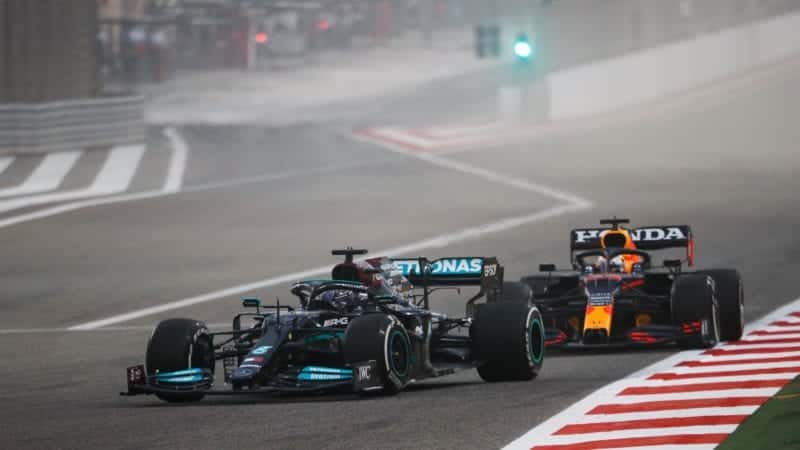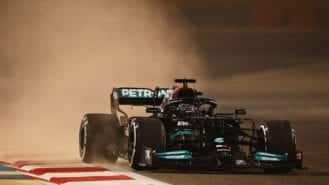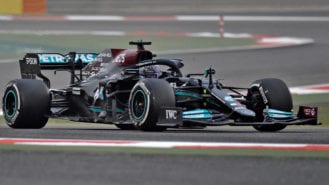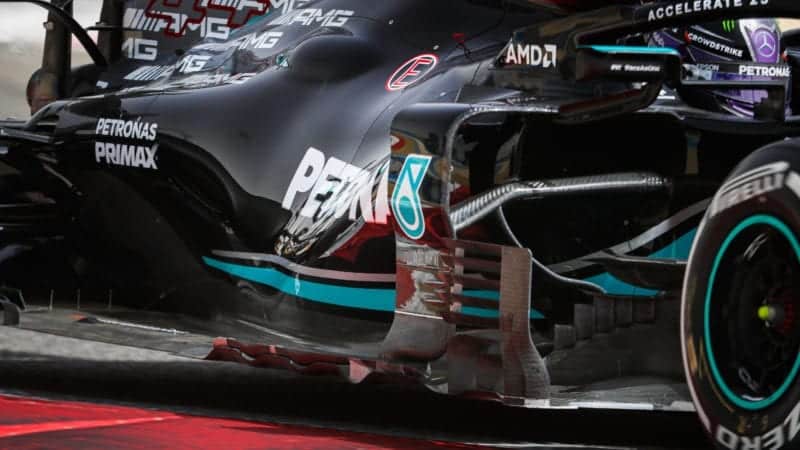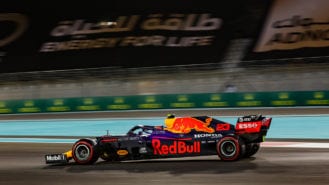Missing mileage
With the regulations staying relatively stable between 2020 and 2021, the usual race simulation running that can serve as a telltale sign of true pace was not on many team’s agendas in Sakhir this year.
Instead, maximising the experimentation of set-up and aero efficiency was the key aspect that took up the majority of teams’ run plans on all three days.
Missing the first morning with a gearbox issue “out of nowhere” cost Bottas and his team three hours of track time while main rivals Red Bull hit the ground running.
He managed just six laps after emerging from the garage with 36 minutes remaining on morning one and the arrival of a sandstorm in the afternoon only compounded the lost time.
Over the next two days, the team was able to run as normal for the majority of the time, save for a spin for Hamilton on day two, though it was slow to emerge from the garage on all three days post-lunch break.
Of all the pre-season tests in the turbo-hybrid era, 2021 is the second-worst for Mercedes in terms of overall distance covered, but only after 2020’s four-day test and it dominated the season.
What is worrying for the team is that despite holding back its filming day until after the preseason test, using both of its allocated 100km days would still leave it short of Red Bull’s total kilometres covered.
The champions only managed 1077km versus 1307km for RBR, and that’s even before the consideration that filming days don’t use race-spec Pirelli tyres, further limiting the value of the track time.
Preseason mileage
| Year | Days of testing | Distance covered (Km) |
| 2014 | 12 | 4972 |
| 2015 | 12 | 6121 |
| 2016 | 8 | 6024 |
| 2017 | 8 | 5102 |
| 2018 | 8 | 4841 |
| 2019 | 8 | 5563 |
| 2020 | 6 | 4204 |
| 2021 | 3 | 1077 |
Is the W12’s design flawed?
Since the regulation shift in 2017 to longer and wider cars, Mercedes has stuck with a low-rake concept while others, chiefly Red Bull, have championed a high-rake philosophy.
Mercedes ran a slightly higher rake angle than usual in Bahrain but the teams that have utilised the higher rake concept looked much better on track in comparison. In 2021, the rear of the floors have been reduced in size, meaning downforce generated at the rear of the car is even more vital as teams look to claw back the lost aero points.
On the opening day, much was made of the W12’s ‘wavy’ floor design by the sidepods but it’s at the rear where the issues seem to arise. Both Hamilton and Bottas complained of an unpredictable and snappy car, the polar opposite of what we’ve seen from the Brackley team in seasons past with it usually on rails over the course of a lap.
“We made some improvements but it’s still not where we want to be. I can’t pick out any one area, it just feels globally through the lap that we need to improve,” Hamilton surmised afterwards.
Teams were coy about thoughts on high rake versus low rake throughout the three-day test, but on first impressions, it looks as though the floor changes may have impacted Mercedes more than others.
